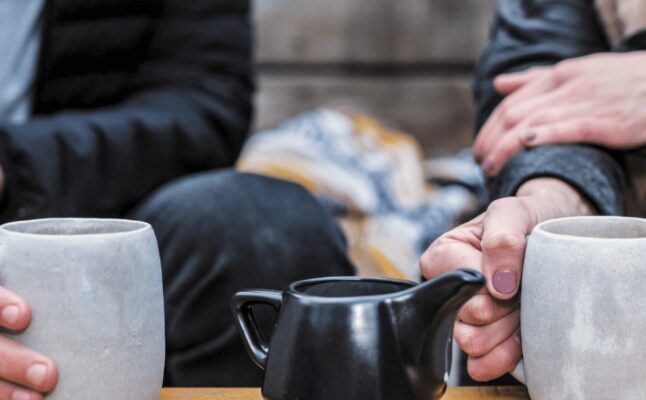
by Rachel Walters from Tribal Tea Co.*
In the realm of comforting beverages, two contenders stand out as timeless favorites – coffee and loose leaf tea. Beyond their shared status as beloved morning rituals, these brews are distinctly different, each offering a unique experience for the senses. Luckily we have a hot drink for everyone, whether it’s bold and full-bodied coffee or the soothing properties of loose leaf tea. Let’s embark on a journey to unravel the characteristics that set coffee and loose leaf tea apart and explore the diverse worlds encapsulated in every sip.
Origins and Cultivation
Coffee: Derived from the roasted beans of the Coffee plant, coffee has a rich and complex history dating back centuries. The beans are primarily grown in tropical regions, with countries like Brazil, Ethiopia, and Colombia renowned for producing exceptional coffee varieties.
Loose Leaf Tea: In contrast, loose leaf tea encompasses a wide array of plant varieties, including Camellia sinensis (used for black, green, white, and oolong teas) and herbal blends featuring herbs, flowers, and spices. Tea is cultivated in diverse climates, from the misty hills of Darjeeling to the rolling fields of China.
Caffeine Content
Coffee: Known for its robust caffeine punch, coffee tends to have higher caffeine levels compared to tea. A standard cup of coffee typically contains more caffeine than an equivalent amount of tea, making it a popular choice for those seeking a strong energy boost.
Loose Leaf Tea: The caffeine content in tea varies depending on the type. Black tea generally has higher caffeine levels, while green and white teas contain less. Herbal teas, which are caffeine-free, provide a soothing alternative for those looking to avoid stimulants.
Flavor Profiles
Coffee: The flavor of coffee is influenced by factors such as roast level, bean origin, and brewing method. Coffee is celebrated for its robust, sometimes bitter, and often complex taste, with notes ranging from fruity to nutty or chocolatey.
Loose Leaf Tea: The world of loose leaf tea is a symphony of flavors. From the bold and malty notes of black tea to the grassy and vegetal nuances of green tea, and the diverse herbal infusions featuring floral, spicy, or citrusy elements, loose leaf teas offer a sensory adventure with every cup.
Brewing Process
Coffee: Typically brewed through methods such as drip brewing, espresso machines, or French press, coffee relies on hot water passing through ground coffee beans to extract its flavors and aromas.
Loose Leaf Tea: The brewing of loose leaf tea involves steeping the leaves in hot water. The temperature and steeping time vary depending on the type of tea, allowing for a more nuanced control over the final cup’s taste and strength.
Health Benefits
Coffee: Rich in antioxidants, coffee is associated with various health benefits, including improved cognitive function and a reduced risk of certain diseases.
Loose Leaf Tea: Loose leaf tea, too, boasts a plethora of health benefits. From the heart-healthy properties of black tea to the metabolism-boosting effects of green tea and the soothing qualities of herbal infusions, tea is celebrated for its potential contributions to overall well-being.
While coffee and loose leaf tea share a place in the hearts of beverage enthusiasts, their differences make them unique and cater to varied preferences. Whether you’re drawn to the bold awakening of coffee or the diverse and nuanced world of loose leaf tea, each cup tells a story and offers a distinct journey for the senses. So, whether you’re a devoted coffee connoisseur or a loose leaf tea aficionado, here’s to savoring the richness of every sip in your preferred brew!
*Tribal Tea Company is a sister company of SweetGrass Trading. You can purchase individual tins of loose leaf herbal teas from SweetGrass Trading, or sign up for a monthly subscription box at Tribal Tea Company’s website.
